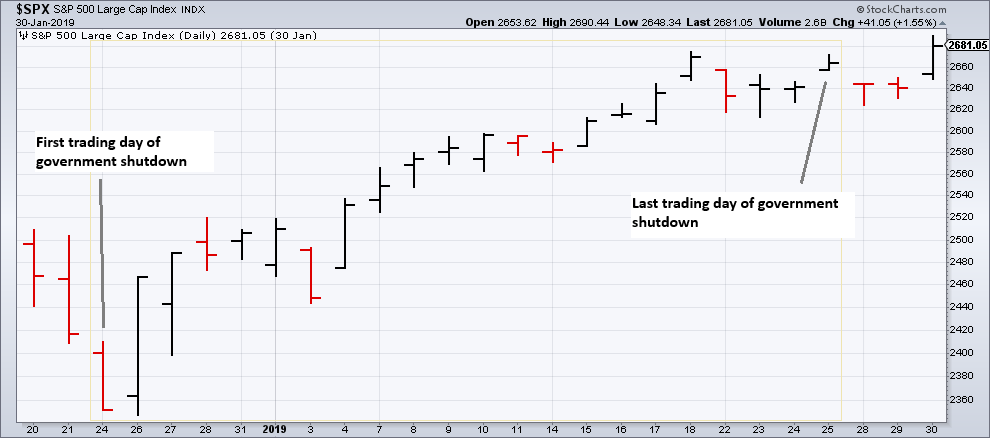What To Expect If A Government Shutdown Starts Next Week
By James Picerno | The Milwaukee Company
Gridlock in Congress threatens a government shutdown starting October 1
Essential services would stay open, but key data and 26% of spending may be paused
Previous shutdowns have had limited, if any, effect on the stock market
A federal government shutdown may be approaching as Congress struggles to pass a stopgap spending bill to maintain funding beyond the Sep. 30 expiration date for the current legislation.
Although the government has flirted with several shutdown events in recent history, funding solutions were found, sometimes at the 11th hour. This time could be different, mostly because of shifting political calculations.
Democrats are considering using a shutdown as political leverage to push legislative priorities that the party can’t otherwise pass in the GOP-controlled chambers of Congress. The political calculus is based on the fact that while Republicans have majorities in the House and Senate, the margins of control are thin, especially in the House. As a result, Democratic votes in some degree are almost certainly required to enact a spending bill.
If a shutdown starts on Oct. 1, no one knows how long it could last or how the closure would affect the economy and financial markets. Looking to history, however, offers some guidance. Here are some key considerations to keep in mind if shutdown politics closes government offices at the start of next month.
Government shutdowns are rare, but hardly unprecedented. Since 1976, “there have been 20 “funding gaps,” according to the Committee for a Responsible Federal Budget, a think tank. The longest ran for 35 days (2018-2019) vs. two separate shutdowns in the 1980s that lasted just a few hours each, based on calculations by Wikipedia.
A shutdown would be partial in the sense that some spending is “mandatory” – Social Security and Medicare payments, for instance – and would continue. Essential services run by the government that affect national security and public safety would also remain operational – examples include the military, border security, and law enforcement.
The economics team at Wells Fargo estimates that a partial government shutdown would impact roughly 26% of federal spending that’s considered “discretionary,” and therefore subject to delay.
Several key economic reports published by the federal government would be postponed or possibly canceled during a shutdown. Affected agencies include: the Bureau of Labor Statistics, the Bureau of Economic Analysis, and the Census Bureau. Among the various reports these agencies publish: payrolls data, the consumer price index, gross domestic product, and retail sales.
Economic reports published by the Federal Reserve will continue during a shutdown because the central bank is an independent, self-funding agency of the government. Among the widely-read releases from the Fed are numbers for industrial production and monetary aggregates.
The impact of previous government shutdowns on financial markets and the economy has been modest, reports Strategas, a division of Baird. In 2023, analysts at the consultancy advised that “in recent years, shutdowns have not really hurt economic growth or even stocks,” noting that “the last six government shutdowns all occurred in quarters with positive GDP growth.”
Research by Invesco indicates: “Government shutdowns haven’t really affected the stock market historically. While there have been examples of heightened market volatility, it’s generally been benign. The S&P 500 Index posted positive returns during 12 of the 21 government shutdowns. The average S&P 500 return during shutdowns has been 0.1%.”
During the most-recent shutdown in 2018-2019, which lasted 35 days, the stock market (S&P 500 Index) rallied:



